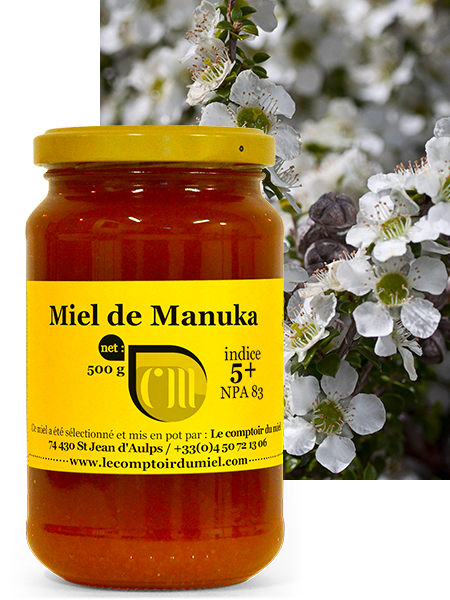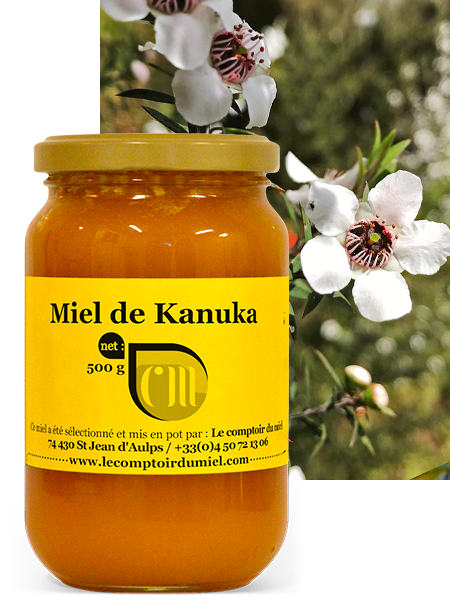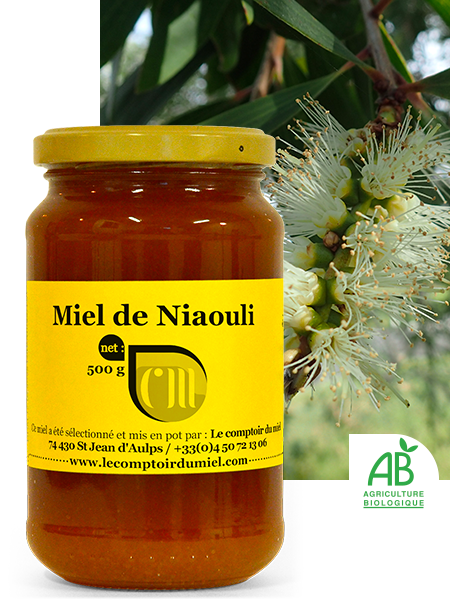Manuka is a variety of tea-tree endemic to New Zealand: There are 2 varieties of tea-tree in New Zealand:
Manuka leptospermum Scopariumand Kanuka Kunzéa Ericoïde. It is very difficult, even for laboratory technicians, to differentiate between the two. Indeed, the pollens Kanuka pollen is easily found in Manuka honey, and vice versa.
We have here Manuka Honey Leptospermum Scoparium
Our direct sourcing from small beekeepers and cooperatives on the South Island, in the Canterbury area. Canterbury region gives us a superior guarantee:
Our partnera French beekeeper, visits his New Zealand beekeeping colleagues twice a year to provide us with this guarantee.
The honey is analyzed before export and on arrival in Europe to certify its antibacterial activity to the maximum extent possible.
Research has highlighted the medicinal properties of New Zealand Manuka honey.
It is part of the traditional pharmacopoeia of the Maoris, the indigenous people of New Zealand, who have been using it for many years.
Manuka honey index 6+ is also used as a healing and is particularly effective against multi-resistant bacteria.
It reduces swelling, increases blood circulation and even accelerates the formation of new scar tissue.
It also appears to have anti-inflammatory and healing properties on burns and ulcers.
Components of Manuka Honey index 5+ :
- MGO (Methylglyoxal): this is the component with anti-bacterial activity. This index expresses the quantity of Methylglyoxal per kilogram of honey. For example, a Manuka honey with the characteristics of 200mg/kg would be represented by MGO 200+. Manuka Health owns the MGO design.
- NPA (Non Peroxide Activity): non-peroxide activity. This scale can be compared to a classic phenolic disinfectant. The more powerful the activity, the greater the circle of inhibition around the honey. A 10% phenol solution, for example, is equivalent to a honey labeled NPA +10.
Since April 1, 2020, this is a European trademark registered by Rastenberger GmbH. - UMF (Unique Manuka Factor): this is the most widespread. It is due to a New Zealand association whose aim is to promote Manuka honey locally and on foreign markets.
Initially, this was the scale created by Peter Molan. Members (beekeepers) pay an entrance fee and are entitled to use the UMF+ logo.
The institution is reputed to be serious and regularly tests its honeys. This is a guarantee of quality for the consumer, as the scale applied is the same as for the NPA (% phenol solution).
However, all honey contains small quantities of hydrogen peroxide molecules, which react to produce an antiseptic effect.
Despite its low non-peroxidic activity, our index 5+ manuka honey is really effective on open wounds and scars. We’ve tested it!
The taste of Manuka Honey index 5+ :
Our Index 5+ Manuka honey has a caramel taste. Its powerful scent is reminiscent of heather. In fact, you could say they’re distantly related. Its consistency is rather granular, but we don’t use it for the pleasure of our taste buds, but more for its benefits.
Did you know?
The best use is to apply Manuka honey 5+ externally to a wound. externally on a wound. Ingesting it can also help with sore throats, mouth ulcers and digestive problems. Methylglyoxal levels increase over time. Our Manuka honey has an MGO index of 94.




Reviews
There are no reviews yet.